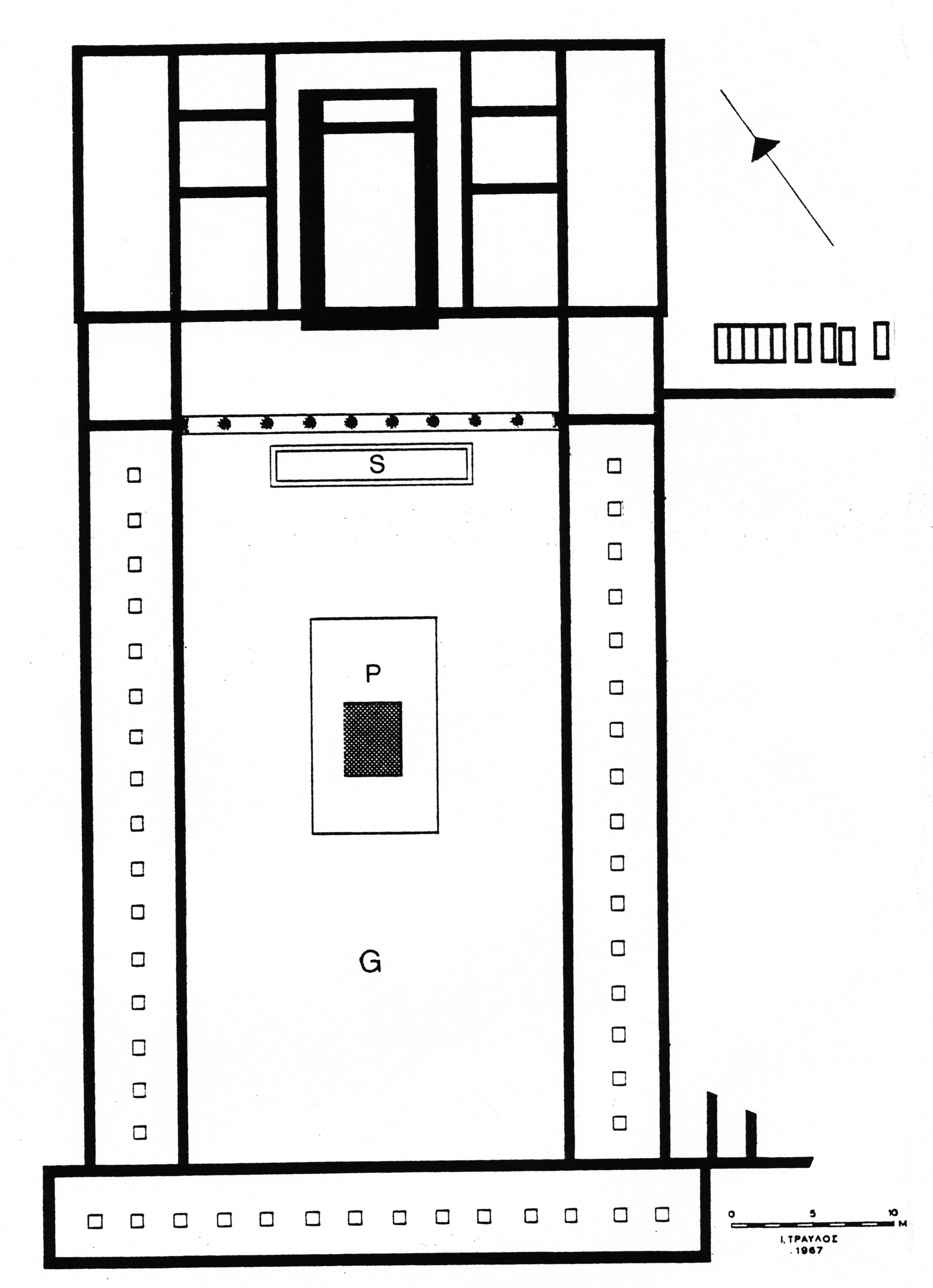Gymnasia and Groves
Province
Province Description
Roman intervention in Greek political affairs resulted in conflicts that led to the destruction of Corinth in 146 B.C. and the sacking of Athens in 86 B.C. It was not until 27 B.C., however, that Augustus formally organized the Roman province of Achaea. Achaea consisted of the cities and territories of the southern Greek mainland between the Peloponnese and Thessaly, as well as Epirus in the northwest and the Ionian and some of the Aegean islands. The provincial capital was Corinth. Under Nero in the mid-1st century A.D. Epirus became a separate province, and in the mid-2nd century Thessaly was detached and added to the province of Macedonia. Under Roman domination many cities such as Athens, Sparta, Patras, and Corinth grew in size and prominence, the latter two partly owing to their importance as ports. After an initial decline in the number of rural sites in the early Empire, by the late Roman period the countryside was densely settled with farms and villas, due to changing landholding patterns and Roman improvements in agricultural and irrigation technology. The main exports from Achaea were wine, particularly from the northern Peloponnese, as well as olive oil and honey, linen and woolen textiles and marbles.
Location
Garden
Gymnasia and Groves
Keywords
- Archaeological
- Literary
- elms (Ulmus sp.)
- gymnasiums
- olive trees (Olea europaea)
- palaestrae
- peristyles (Roman courtyards)
- plane trees (Platanus orientalis)
- poplars (Populus sp.)
- statues
- water features (landscaping)
Garden Description
The three most famous gymnasia in Athens, situated outside the city in naturally well-watered and shady sanctuaries of pre-Classical date, were those in the suburbs. In the Academy there was a shrine of the hero Hekademos; the Lykeion had a sanctuary of Apollo; and a cult site of Herakles was located in Kynosarges. The gymnasia in these suburbs were especially revered in Roman times as prestigious educational centers. They included running tracks and other sports grounds for physical training, rooms for literary instruction and baths spread out over a large area and loosely added to in the course of time. In each of the three areas foundation walls of a building enclosing a palaestra, or sports ground, of the 4th century B.C. have been excavated. Roman building activity in the Athenian suburbs is confirmed by Pausanius (1.18.9). According to him, Hadrian had a gymnasium named after him outside the walls of Athens near the Ilissos River in Kynosarges, although it is unclear whether he actually had a new gymnasium built here in the 2nd century A.D. or if he merely refurbished the old one. Roman honorific inscriptions and baths erected on the sites of the three suburban gymnasia indicate that they were kept up and modernized well after the Classical period.
Ancient literary references to the plane, elm, poplar, and olive trees in the Academy are numerous. Excavations in the suburb of Academy have shown that a new gymnasium was built there in the late Hellenistic/early Roman period. This gymnasium consisted of a central courtyard enclosed by porticoes on all four sides (Fig. 1). The northern wing of the building complex contained rooms which were probably used as libraries and for lectures, while the south, west and east wings appear to have had a row of desks, of which only the stone bases remain, running down the middle of each corridors. The courtyard itself may have been used as a palaestra for training, although by this period Greek education focused less on physical training than on lectures, debates, and literary study. The courtyard had a pool in the center (P on plan) and a podium for statues (S on plan), possibly of the Muses, at the northern end, both of which certainly would have restricted any space for athletics. No paving in the courtyard could be found, and it possible that it was planted in some way, perhaps with shade trees (G on plan).
Plans

Fig. 1: Plan of the late Hellenistic/early Roman gymnasium with a possible garden (G), a pool (P) and a podium for statues (S) in the suburb of Academy at Athens. Adapted from Travlos 1971, fig. 59.
Dates
4th century BCE and later
Bibliography
- J. Travlos, Bildlexikon zur Topographie des antiken Athen, Tübingen, 1971, pp. 42-51, 180F, 181L, 340-341, 345-347, 579, figs. 59-62. (worldcat)
- M. Carroll-Spillecke, Κήπος. Der antike griechische Garten. Wohnen in der klassischen Polis 3, Munich, 1989, pp. 28-29.(worldcat)
- M. Carroll-Spillecke, "The gardens of Greece from Homeric to Roman times," Journal of Garden History 12, 1992: 91, fig. 13
- W. Hoepfner, “Platon’s Akademie. Eine neue Interpretation der Ruinen,” in W. Hoepfner, ed., Antike Bibliotheken, Mainz, 2002, pp. 56-62. (worldcat)
Pleiades ID
TGN ID
Contributor
Maureen Carroll (ORCID: 0000-0001-9958-8032)
Publication date
21 Apr 2021